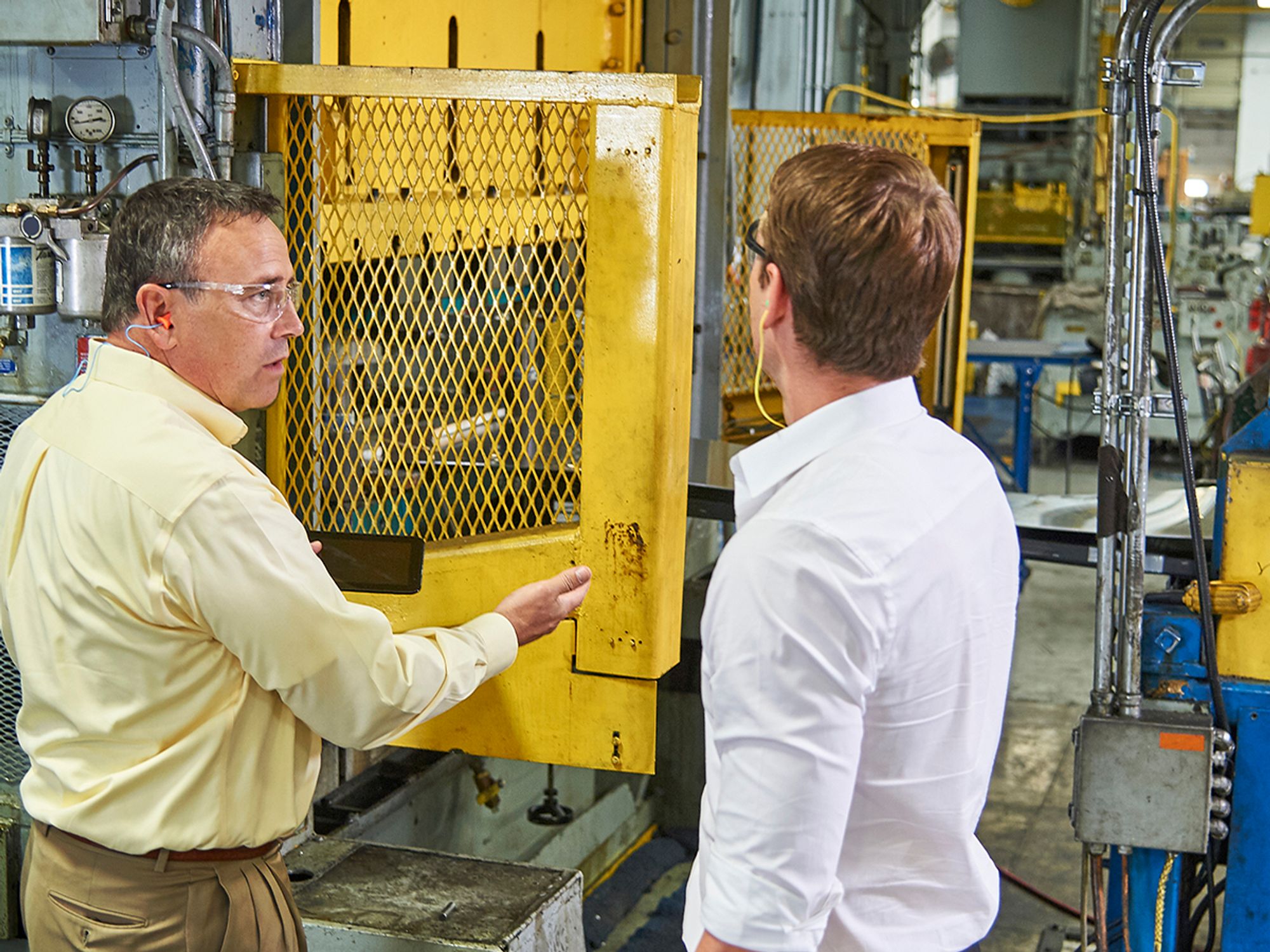What are the OSHA requirements for mechanical power-transmission apparatuses?

- A machine’s power-transmission apparatus comprises all components that transmit energy to the point of operation.
- Moving components and nip points must be guarded to protect employees from amputation hazards.
The Occupational Safety and Health Administration (OSHA) considers a mechanical power-transmission apparatus to be all components of the mechanical system that transmit energy to the part of the machine performing the work. These components include flywheels, pulleys, belts, connecting rods, couplings, cams, spindles, chains, cranks, and gears. These types of systems present rotating parts and nip points that can cause injury by catching employees’ hands, arms, clothing, or hair. In addition, power-transmission apparatuses installed above work areas can injure employees with flying and falling materials if the guards break.
OSHA requires guarding for most types of power-transmission apparatus. Generally, power-transmission components such as flywheels, shafting, belts, and pulleys must be guarded unless they are located more than seven feet above a floor or platform. (29 CFR 1910.219)
This section covers all types and shapes of power-transmission belts, except the following when operating at 250 feet per minute or less:
- Flat belts 1-inch wide or less,
- Flat belts 2-inches wide or less that are free from metal lacings and fasteners,
- Round belts one-half of an inch or less in diameter, and
- Single strand V-belts thirteen thirty-seconds of an inch wide or less.
Note: There are a few other exceptions to specific guarding requirements; see 1910.219.
Guard securement
Guards may be fastened by any secure method that prevents them from being inadvertently dislodged or removed, including but not limited to screws, bolts, wing nuts, and lock fasteners. OSHA allows the use of guards that can be easily removed for efficient maintenance or repair, so long as these guards can be securely reattached to protect employees once maintenance or repair is completed.
Shafting
All exposed parts of horizontal shafting seven feet or less from a floor or working platform, except for runways used exclusively for oiling or running adjustments, must be protected by a stationary casing that encloses the shafting completely or by a trough that encloses the sides and top or sides and bottom of the shafting as its location requires.
Shafting under bench machines must also be enclosed by a stationary casing or by a trough at the sides and top or sides and bottom as its location requires. The sides of the trough must come within at least six inches of the underside of the table, or if shafting is located near floor within six inches of floor. In every case the sides of trough shall extend at least two inches beyond the shafting or protuberance.
Vertical and inclined shafting seven feet or less from a floor or working platform, except for maintenance runways, must be enclosed with a stationary casing in accordance with the requirements of 1910.219(m) and (o).
Projecting shaft ends
Projecting shaft ends must have smooth edges and ends and may not project more than half the shaft diameter unless guarded by nonrotating caps or safety sleeves. Unused keyways must be filled up or covered.
